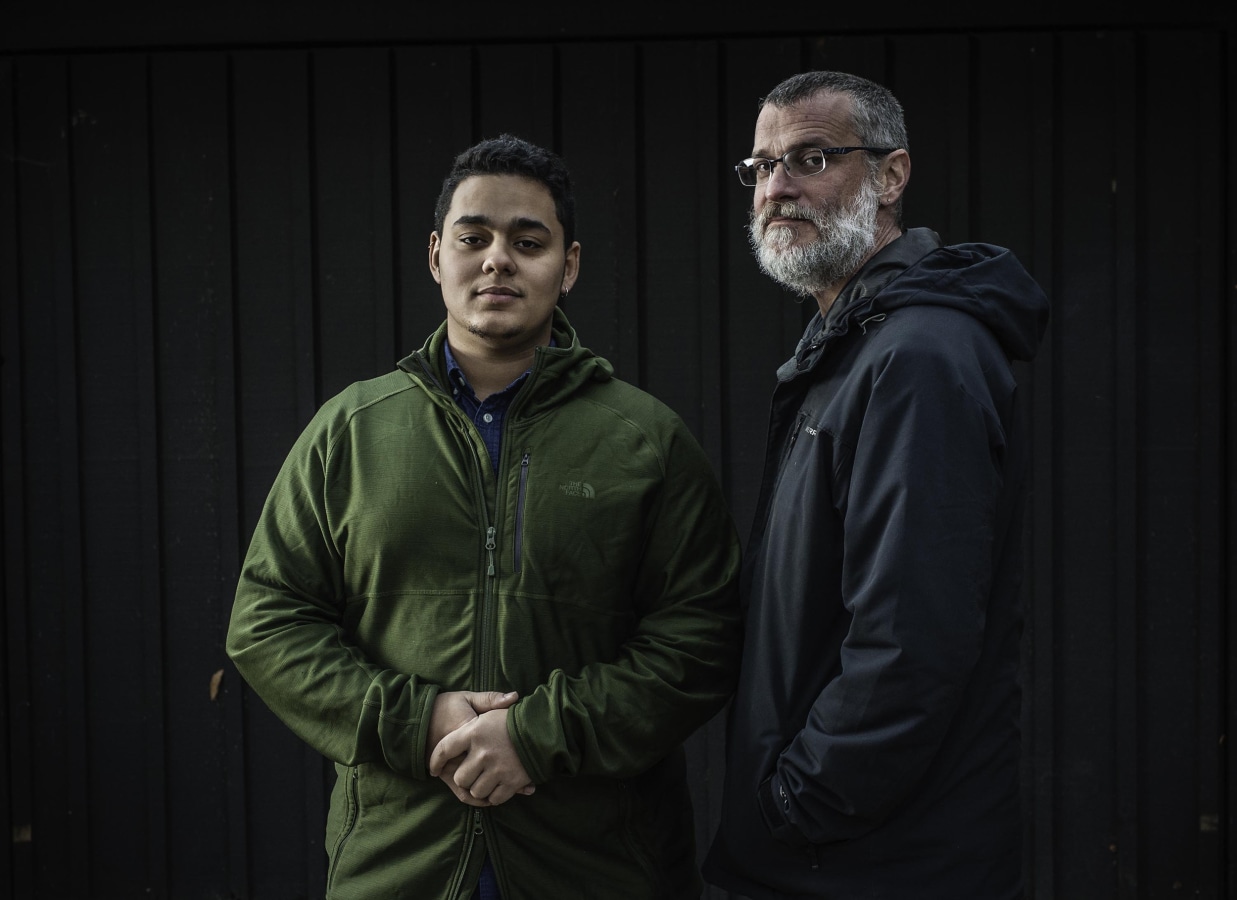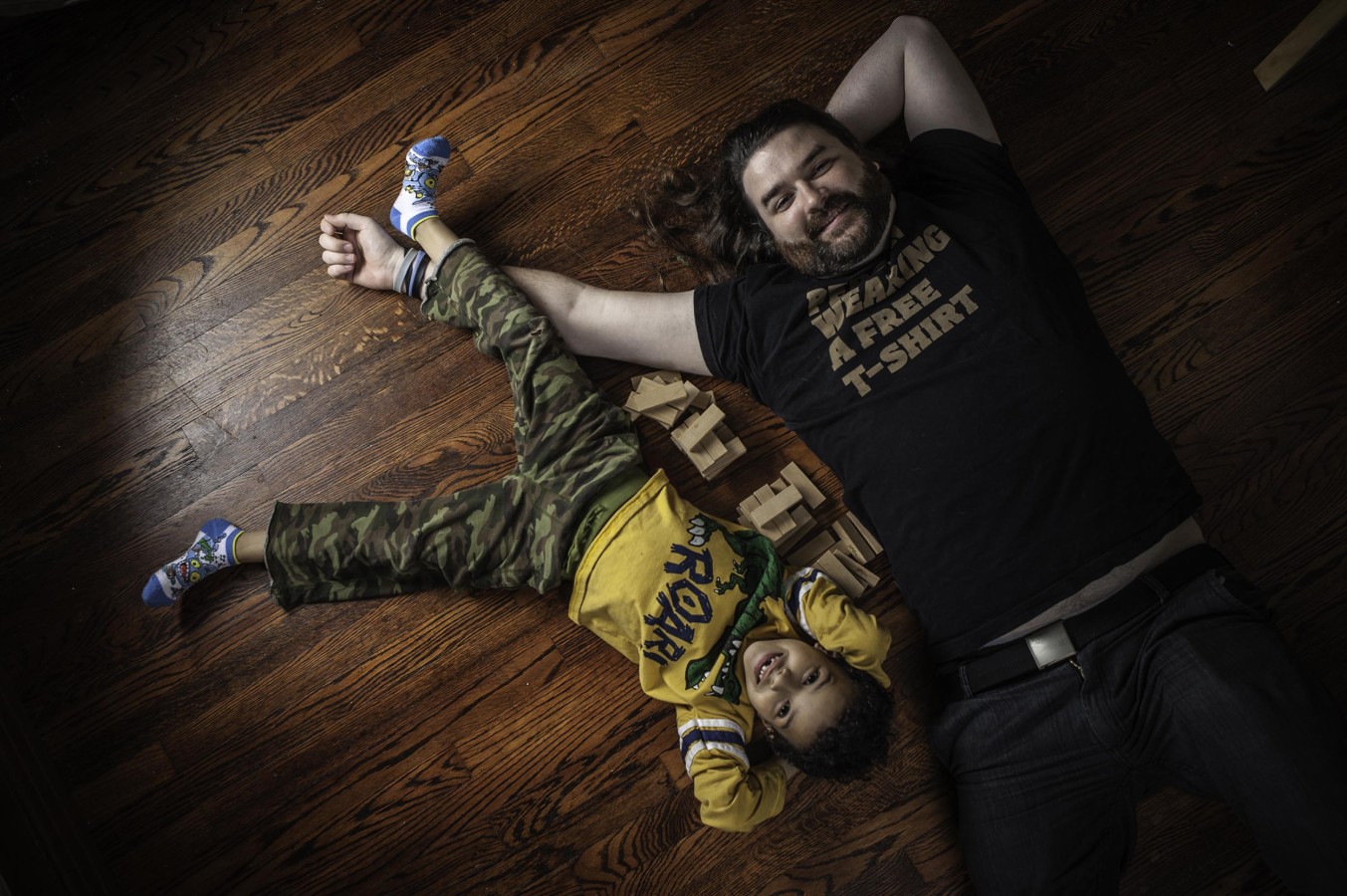Living Color: Fathers Talk to Their Bi-Racial SonsPosted in Articles, Arts, Family/Parenting, Media Archive, United States on 2015-01-17 20:11Z by Steven |
Living Color: Fathers Talk to Their Bi-Racial Sons
NBC News
2015-01-14
Photographs by André Chung
Teaching lessons they never had to learn, fathers speak to their bi-racial sons about identity, perception, and dealing with law enforcement.

Mark Johnson-Lewis, 48, and his son, Tyler Lewis, 22, of Columbia, MD (André Chung/NBC News)
…Mark: You’re black in this world, and it doesn’t matter what you think of who you are, you have to be conscious of how others are going to see you. And when you bump up against the law, it’s probably not going to be the best experience because of how others see you.
Tyler: I want to become a police officer and it’s kind of something that I struggle with being a black man. There needs to be a change in mindset of the way people view law enforcement. And there needs to be a change in the way law enforcement views the average American. You know, not as a black American, not as a white American, but as a person, as a human being…

Benjamin Jancewicz, 31, with his son, Arion, 6, of Baltimore, MD. (André Chung/NBC News)
Benjamin: Regardless of how light he is, he’s still going to be, you know, with a lot of other people doing a lot of other things. And he needs to be prepared. And that just really worries me because, you know, as much of a perspective as I do have coming from a– a [diverse] culture, I still know that my own skin tone allows me to get away with a lot of other stuff…
View the entire photo-essay here.
